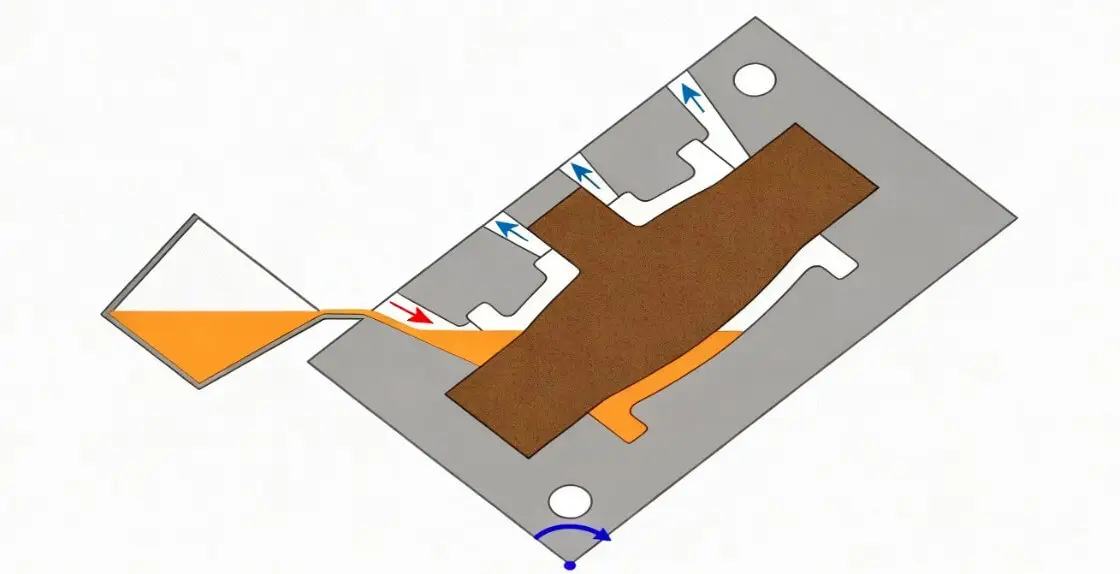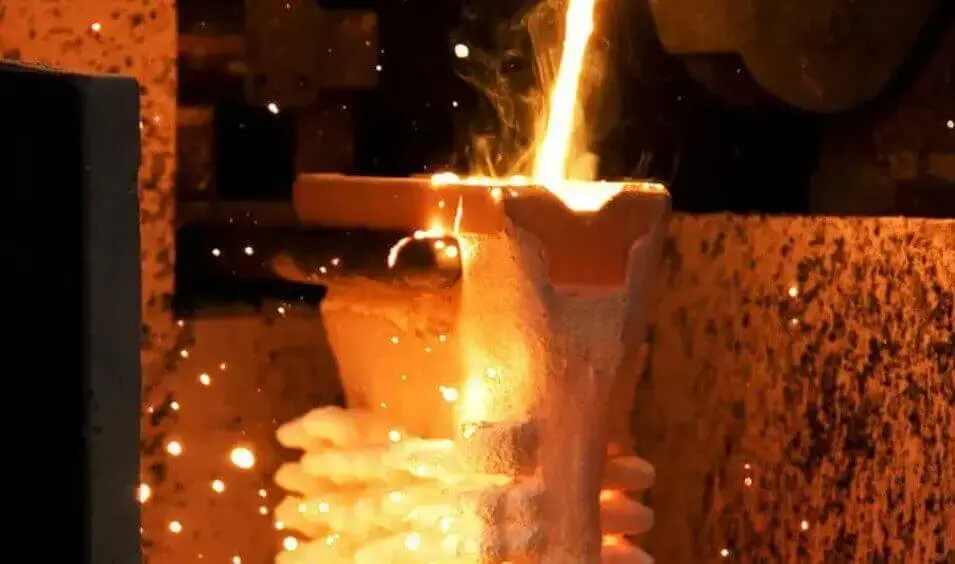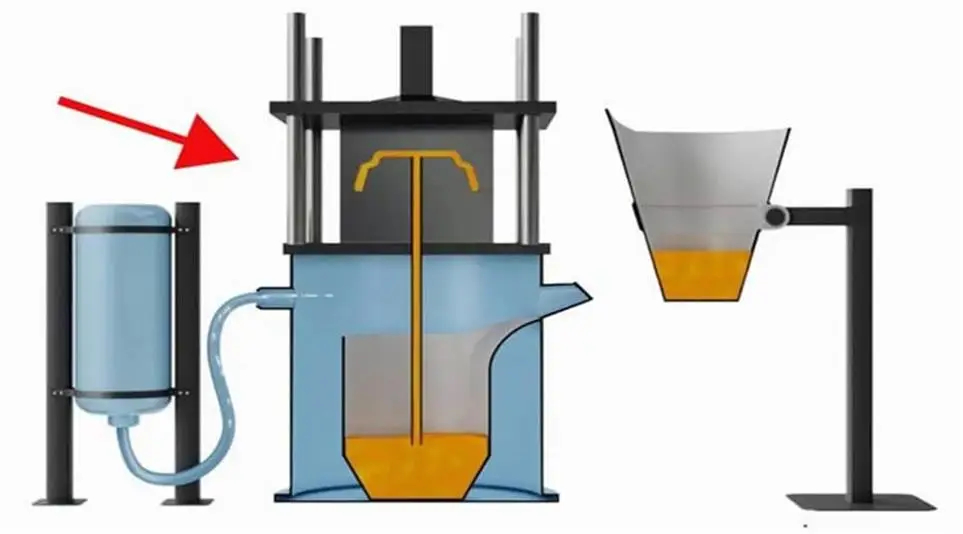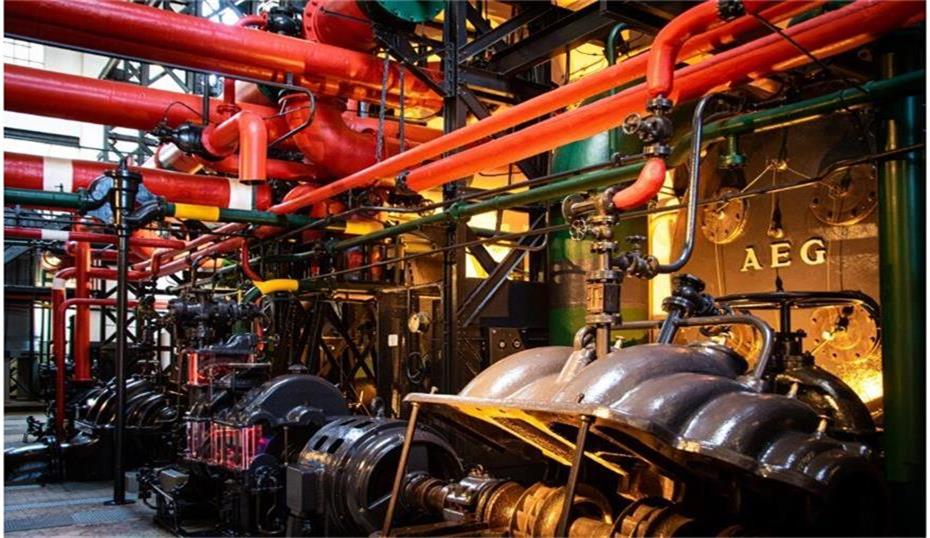Tilt casting : principles, methods, applications and advantages
The tilt casting process is a special metal casting method that achieves smooth filling of molten metal by controlling the tilt angle and speed of the mold, thereby obtaining high-quality castings. This article will introduce the principles, methods, precautions, applications and advantages of the tilt casting process in detail.
Table of Contents
1.Principle of tilt casting process
The basic principle of the tilt casting process is to tilt the mold at a certain angle during the casting process, and control the filling speed of the molten metal and the tilt speed of the mold so that the molten metal can fill the mold smoothly under the action of gravity. This process can effectively reduce defects such as pores and slag inclusions, and improve the density and mechanical properties of the casting.
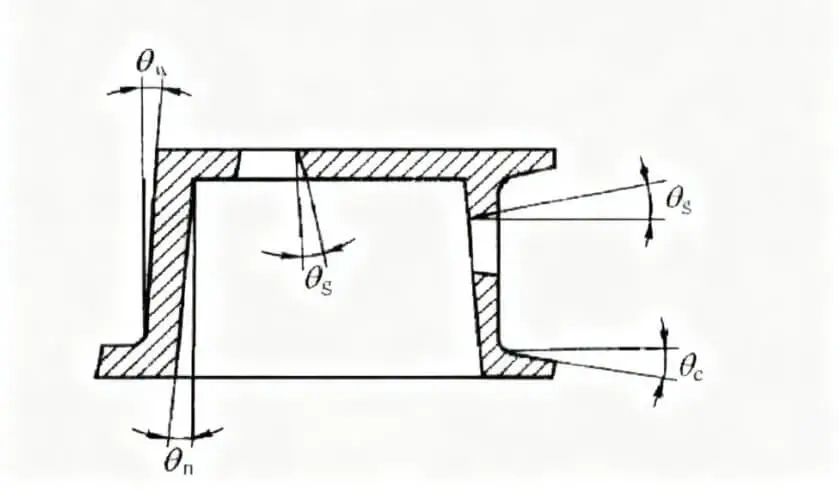
(1) Tilt angle of the mold:
The tilt angle of the mold is an important factor affecting the filling effect of the molten metal. A suitable tilt angle can ensure that the molten metal remains stable during the filling process and avoid eddy currents and splashes.
(2) Filling speed:
The control of the filling speed is the key to the tilt casting process. A reasonable filling speed can ensure that the molten metal does not produce air entrainment during the filling process and reduce the formation of pores.
(3) Mold movement:
During the tilt casting process, the mold usually reciprocates or rotates to promote the flow and exhaust of molten metal and improve the quality of the casting.
2.Relationship between tilt casting and gravity casting
Gravity casting generally refers to a casting method in which molten metal fills the mold cavity under the action of gravity, including traditional processes such as sand casting and metal mold casting. Tilt casting is an improved process of gravity casting. The core difference between the two is:
(1) Mold movement mode:
In gravity casting, the mold remains horizontal or fixed, while tilt casting uses a mechanical device to rotate and tilt the mold around a horizontal or vertical axis.
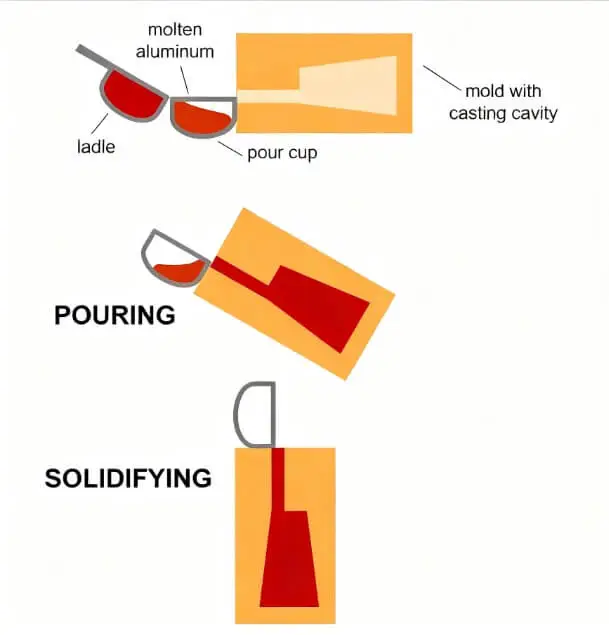
(2) Liquid metal flow control:
Gravity casting relies on vertical gravity filling, which is prone to turbulence, splashing and gas entrainment; tilt casting adjusts the flow direction and speed of the molten metal by the tilt angle to achieve “directional filling” and “sequential solidification”.
(3) Application scenario expansion:
Gravity casting is suitable for simple structural castings, while tilt casting can produce complex components that are difficult to form by traditional gravity casting (such as thin-walled blades, shells with deep cavities, etc.) by optimizing the filling process.
Summary: Tilt casting is a technical extension of gravity casting. By introducing angle control variables, it breaks through the limitations of traditional gravity casting in filling efficiency and casting quality.
3.Typical process flow of tilt casting

(1) Mold preparation:
The mold (metal mold or sand mold) is installed on a tiltable rotating mechanism to ensure the accuracy of the tilt angle (usually controlled by a servo motor or hydraulic system).
The mold surface is sprayed with a release agent and preheated to prevent cracks caused by the molten metal from being chilled.
(2) Tilt angle setting:
The optimal tilt angle is calculated based on the structure of the casting. For example, for a vertical cavity with a large height, the angle is usually 30°~45°; for flat thin-walled parts, the angle can be reduced to 15°~20°.
(3) Coordination of pouring and tilting action:
The mold first maintains a certain initial tilt angle (such as 20° with the horizontal plane), and the molten metal flows smoothly from the gate into the cavity to avoid direct impact.
During the pouring process or after the pouring is completed, the mold slowly rotates to the target angle (such as 45°) according to the preset program and maintains this posture until the molten metal is completely solidified.
For complex castings, the “segmented tilting” technology may be used: first guide the filling at a small angle, and then gradually increase the angle to promote shrinkage compensation.
(4) Solidification and cooling:
In the tilted state, the molten metal continues to compensate for the shrinkage of the casting under the action of gravity, especially the thick wall or riser area.
The cooling time is determined according to the type of metal (such as aluminum alloy, cast iron, high temperature alloy) and the thickness of the casting, and is usually 10%~30% longer than traditional gravity casting.
(5) Demolding and post-processing:
After the mold returns to a horizontal position, the mold is opened, the casting is taken out and the processes such as de-gating the riser, grinding, and flaw detection (such as X-ray detection, penetration detection) are carried out.
4.How to correctly pour molten metal into the tilted mold
Pouring metal into the tilted mold is a process that requires precise control and attention to multiple technical details. The following are some key steps and precautions:
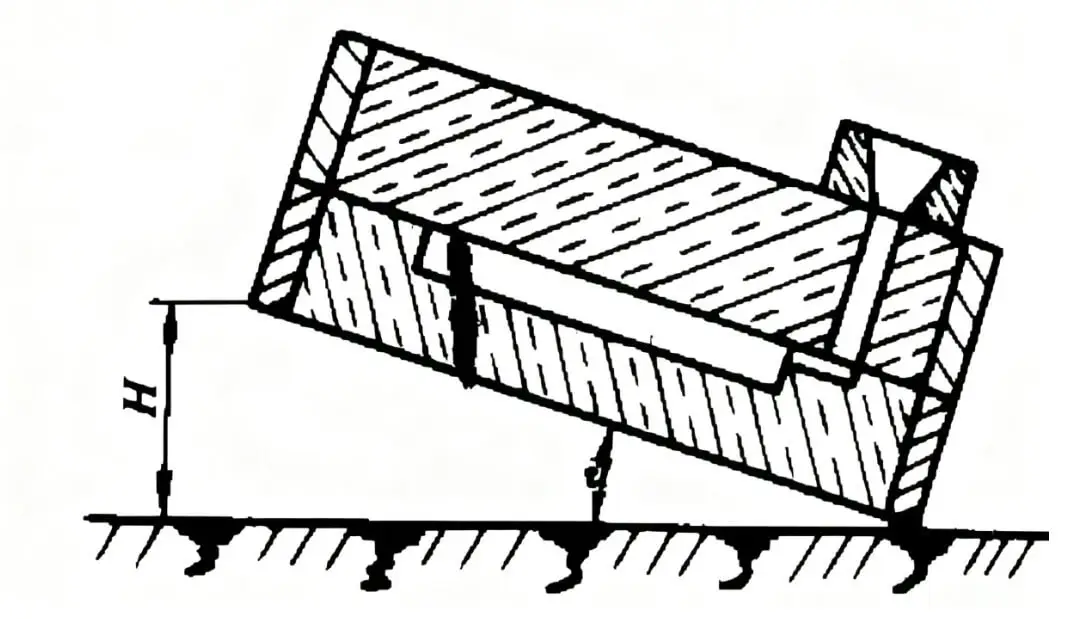
(1) Pouring system design:
Design a reasonable pouring system to ensure that the molten metal can smoothly fill the mold cavity. Generally, the gate should be placed at the lower part of the mold, and the vent should be placed at the highest point to facilitate the flow of molten metal and the exhaust of gas.
(2) Pouring speed control:
The pouring speed should be appropriately adjusted according to the characteristic wall thickness of the casting. For castings with different wall thicknesses, the pouring time will be different. For example, the pouring time of a casting with a wall thickness of 10mm can be 17 seconds, while the pouring time of a casting with a wall thickness of 20mm can be increased to 19 seconds.
(3) Pouring temperature:
Pouring temperature has an important influence on the quality of castings. When casting with a metal mold, the pouring temperature is generally 20-35°C higher than that of sand mold casting to ensure that the liquid metal can fill the mold cavity. However, the pouring temperature should not be too high, so as not to affect the structure and mechanical properties of the casting and reduce the service life of the metal mold.
(4) Tilt angle:
When tilting the mold, the appropriate tilt angle should be determined according to the structural characteristics of the casting. For castings with large surfaces, it may be necessary to tilt the mold more than 15° to ensure that the molten metal rises steadily in the mold cavity and avoid damaging the plastic film on the upper mold.
(5) Pouring method:
Depending on the characteristics of the casting, horizontal pouring, tilted pouring or vertical pouring can be selected. For castings that require tilted pouring, ensure that the sprue is located at the lower end so that the molten metal can rise smoothly and fill the mold cavity.
5.Application of tilted casting process
Due to its unique advantages, the tilted casting process has been widely used in many fields.
(1) Automobile industry:
The tilt casting process is often used to produce complex castings such as automobile engine cylinder blocks and cylinder heads. These castings require high strength and density, and the tilt casting process can meet these requirements.
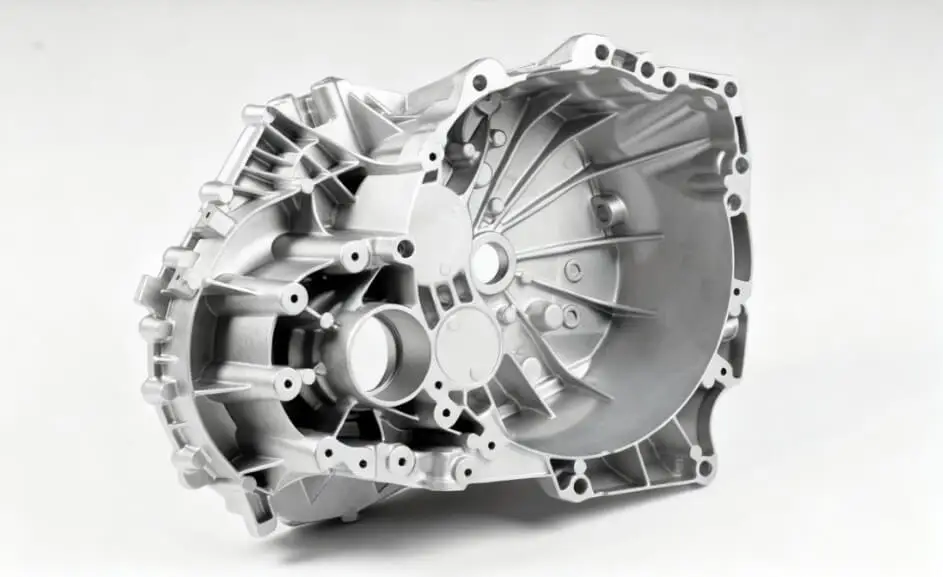
(2) Aerospace:
In the aerospace field, the tilt casting process is used to produce high-performance aluminum alloy castings. These castings usually need to have excellent mechanical properties and corrosion resistance, and the tilt casting process can guarantee these performance requirements.
(3) Mechanical manufacturing:
The tilt casting process is also widely used in the mechanical manufacturing field to produce various complex-shaped castings. For example, castings such as pump bodies and valve bodies can achieve higher precision and performance through the tilt casting process.
6.Advantages of the tilt casting process
Compared with traditional casting processes, the tilt casting process has the following advantages:
(1) Reducing defects:
The tilt casting process can effectively reduce defects such as pores and slag inclusions, and improve the density and mechanical properties of castings. During the tilt casting process, the molten metal is filled smoothly under the action of gravity, reducing the possibility of air entrapment and slag inclusions.
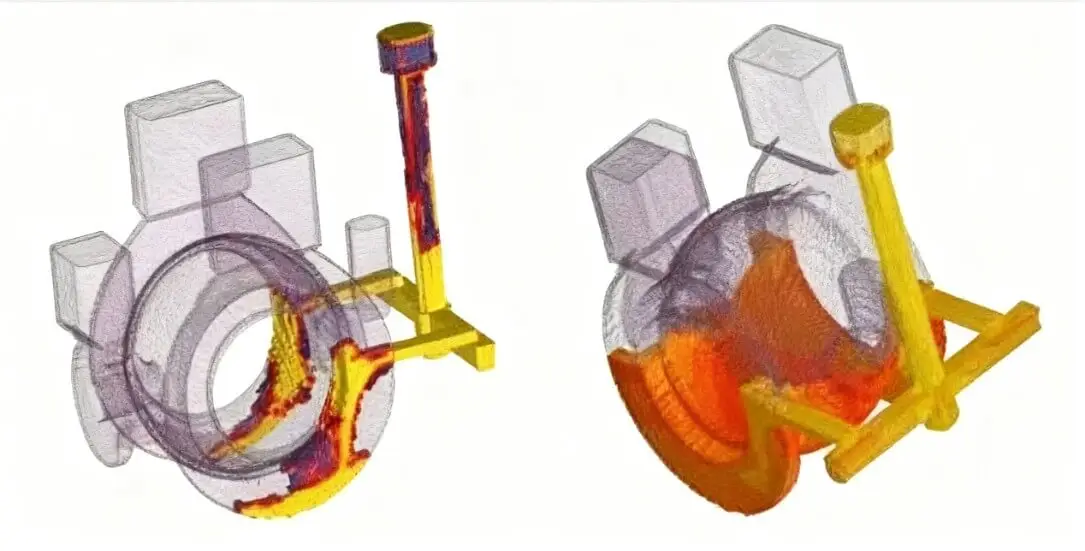
(2) Improve precision:
It can improve the dimensional accuracy and surface finish of the casting. During the tilt casting process, the filling speed of the molten metal and the movement of the mold are precisely controlled, which reduces the deformation and surface defects of the casting and improves the precision.
(3) Reduce energy consumption:
Tilt casting can reduce the energy consumption in the casting process. This is because during the tilt casting process, the filling speed of the molten metal and the movement of the mold are optimized, which reduces the energy consumption.
(4) Shorten the cycle:
It can shorten the casting cycle and improve production efficiency. During the tilt casting process, the filling speed of the molten metal and the movement of the mold are optimized, which reduces the casting time and post-processing time.
7.Conclusion
The tilt casting process is an efficient and high-quality metal casting method with broad application prospects. By continuously optimizing process parameters and control methods, the tilt casting process will play a more important role in future casting production.
FAQs:
What is tilt casting?
Tilt casting is a gravity casting method in which the mold is initially placed in a horizontal or angled position to inject molten metal, then slowly tilted to vertical to complete the mold filling. This method aims to reduce turbulence and air entrapment through smooth flow.
What is the biggest advantage of tilt casting?
The biggest advantage is reduced pouring turbulence and air entrainment, thereby reducing porosity, inclusions, and cold shuts, and improving internal density and surface quality.
What materials are suitable for tilt casting?
Metal mold gravity casting is commonly used for aluminum alloys and low-melting-point metals. It can also be used in sand or precision casting processes. It is particularly suitable for alloys with high fluidity or those requiring low air entrapment.
What parts or structures are suitable for tilt casting?
It is suitable for thin-walled parts, complex cavities, and small to medium-sized castings requiring high surface quality, such as automotive bodies, engine covers, and precision aluminum parts.
What key points should be considered when designing the casting and cavity?
Key points include proper material channel/overflow layout, controlling tilting angular velocity and back pressure, and designing effective venting channels to avoid dead zones and back pressure that can cause poor mold filling.
What common defects can tilt casting reduce?
It can significantly reduce air entrapment, surface air inclusions, and porosity, but shrinkage and segregation still require control through feeding design and heat treatment.
What are the limitations of tilt casting?
It is not suitable for very large pieces or metals with extremely high melting points or very low fluidity. The process requires high mold rigidity, sealing, and tilt control, and requires significant initial tooling investment.
What are the automation and production capacity of tilt casting?
Tilt casting can often be mechanized or automated (tilting machines), making it suitable for medium to large-scale production. Automation can also stabilize pouring speed and angle, reducing human-induced fluctuations.

